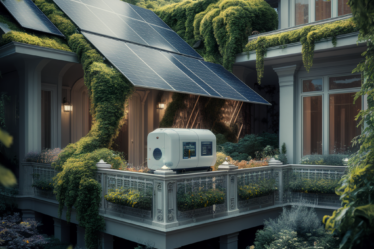
When choosing the right fence for your home, the decision often comes down to two popular options: metal fencing and wooden fencing. Each material offers its own unique benefits and drawbacks, and the best choice depends on your priorities—whether that’s durability, style, cost, or maintenance. Today, we’ll break down the key differences between metal and wooden fencing to help you make an informed decision.
Appearance and Aesthetic Appeal
Wooden Fencing:
Wood is a classic choice that adds warmth and charm to any home. As Fencing Contractors in Leicester confirm, it offers a natural look that complements a wide range of architectural styles, from rustic cabins to modern farmhouses. Wooden fences can be stained or painted in various colours, offering flexibility in design.
Metal Fencing:
Metal fences, such as wrought iron or steel, bring a sleek and modern look to a property. They can range from ornate designs with decorative scrolls to minimalist styles for contemporary homes. While they may lack the warmth of wood, they make up for it with elegance and sophistication.
Durability and Longevity
Wooden Fencing:
Wood is susceptible to weathering, pests, rot, and warping over time. Even treated wood requires periodic maintenance to prevent deterioration. With proper care, wooden fences last 10–15 years in general.
Metal Fencing:
Metal fencing is much more durable and can withstand harsh weather conditions better than wood. Aluminium resists rust and corrosion, while steel and wrought iron are incredibly strong (though they may require rust-proof coatings). Metal fences can last 30 years or more with minimal maintenance.
Maintenance Requirements
Wooden Fencing:
Wood needs regular maintenance to stay in good condition. This includes staining and sometimes repairing or replacing rotted or broken boards. Neglecting these tasks can shorten its lifespan significantly.
Metal Fencing:
Metal is far easier to maintain. Aluminium fencing requires almost no upkeep; even wrought iron only needs occasional rust prevention treatments. This makes metal a more convenient option for homeowners looking for a low-maintenance solution.
Cost Considerations
Wooden Fencing:
Wood is generally more affordable upfront than metal. However, the ongoing maintenance and eventual replacement costs can add up over time. It’s a budget-friendly option for short- to medium-term fencing needs.
Metal Fencing:
The initial cost of metal fencing is typically higher, especially for wrought iron. But its durability and low maintenance mean it could be more cost-effective in the long run. It’s an investment that pays off over time, especially regarding resale value and long-term reliability.
Privacy and Security
Wooden Fencing:
Wood is an excellent choice for privacy, as it can be built with little to no gaps between boards. It’s ideal for backyards, garden enclosures, and areas where privacy is a priority.
Metal Fencing:
Metal fences generally provide less privacy unless combined with panels or decorative screens. However, they are excellent for security. Their strength and height can deter intruders more effectively than wood, particularly when topped with pointed designs or additional security features.
Which is Best for Your Home?
Wood may be your ideal choice if you value a traditional look, privacy, and lower upfront costs. On the other hand, if you prefer durability, security, and minimal maintenance, metal fencing could be the better investment. Consider your lifestyle, climate, and budget before making a decision. Whichever you choose, a quality fence enhances your home’s kerb appeal and functionality.

